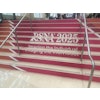CHICAGO - Philips Medical Systems served notice at this week’s RSNA meeting that it won’t be left out of the multislice CT market. The Shelton, CT, company has introduced Secura MV, a new multislice scanner being shown as a work in progress.
Like other multislice scanners, Secura MV is based on 3-D data acquisition and reconstruction technology called TrueView. Each TrueView detector has multiple elements, which collect a volume of data with each rotation of the system. The system’s detector completes a rotation in 0.7 seconds.
Philips has built the system with future upgrades in mind by designing 16 detector elements into the current version. At present, the scanner has four data channels, giving it the ability to collect four slices simultaneously. But Philips plans to double the number of channels the system can support each year, until each of the 16 detector elements is matched by 16 data channels, according to Thomas Peters, CT sales specialist.
Philips believes that its MRC x-ray tube technology is another feature that will differentiate the system from its multislice competition. MRC pumps oil into the anode shaft of the tube, enabling the tube to cool faster than a conventional x-ray tube. Secura MV has a heat rating of 7.7 million heat units and cools at a rate of 1.54 MHU per minute.
This enables Secura MV to get the same performance as other multislice scanners, with half the dose increase, according to Peters. Secura MV delivers only 15% more radiation dose than a single-slice scanner.
Philips also increased the computer power used for image reconstruction on the system. Philips engineers have designed eight application-specific integrated circuits (ASICs) to handle image reconstruction. Because of the ASICs, Secura MV is able to perform true cone-beam reconstruction without artifacts.
Philips will begin deliveries of Secura MV in the third quarter of 2001, according to Peters.
By Brian Casey
AuntMinnie.com staff writer
November 30, 2000
Like other multislice scanners, Secura MV is based on 3-D data acquisition and reconstruction technology called TrueView. Each TrueView detector has multiple elements, which collect a volume of data with each rotation of the system. The system’s detector completes a rotation in 0.7 seconds.
Philips has built the system with future upgrades in mind by designing 16 detector elements into the current version. At present, the scanner has four data channels, giving it the ability to collect four slices simultaneously. But Philips plans to double the number of channels the system can support each year, until each of the 16 detector elements is matched by 16 data channels, according to Thomas Peters, CT sales specialist.
Philips believes that its MRC x-ray tube technology is another feature that will differentiate the system from its multislice competition. MRC pumps oil into the anode shaft of the tube, enabling the tube to cool faster than a conventional x-ray tube. Secura MV has a heat rating of 7.7 million heat units and cools at a rate of 1.54 MHU per minute.
This enables Secura MV to get the same performance as other multislice scanners, with half the dose increase, according to Peters. Secura MV delivers only 15% more radiation dose than a single-slice scanner.
Philips also increased the computer power used for image reconstruction on the system. Philips engineers have designed eight application-specific integrated circuits (ASICs) to handle image reconstruction. Because of the ASICs, Secura MV is able to perform true cone-beam reconstruction without artifacts.
Philips will begin deliveries of Secura MV in the third quarter of 2001, according to Peters.
By Brian Casey
AuntMinnie.com staff writer
November 30, 2000
Copyright © 2000 AuntMinnie.com
Click here to view the rest of AuntMinnie’s coverage of the 2000 RSNA conference.
Click here to post your comments about this story.



















